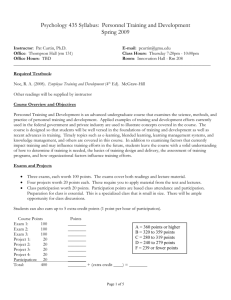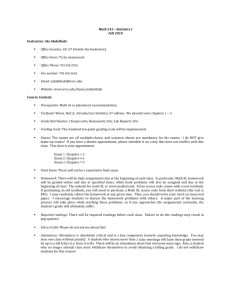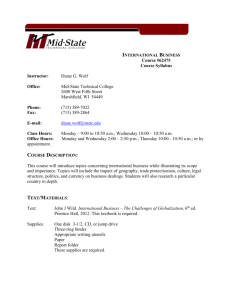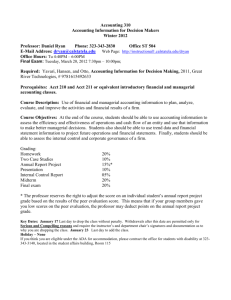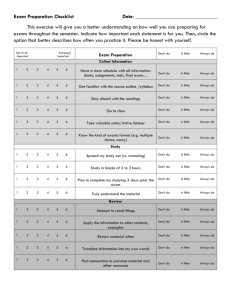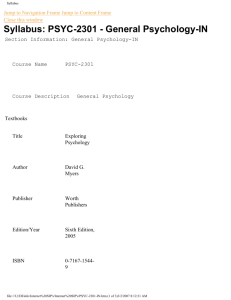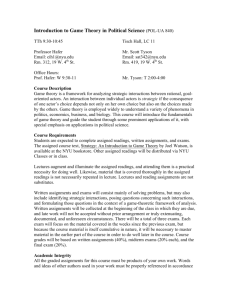ANSWERS to common QUESTIONS about the class
advertisement
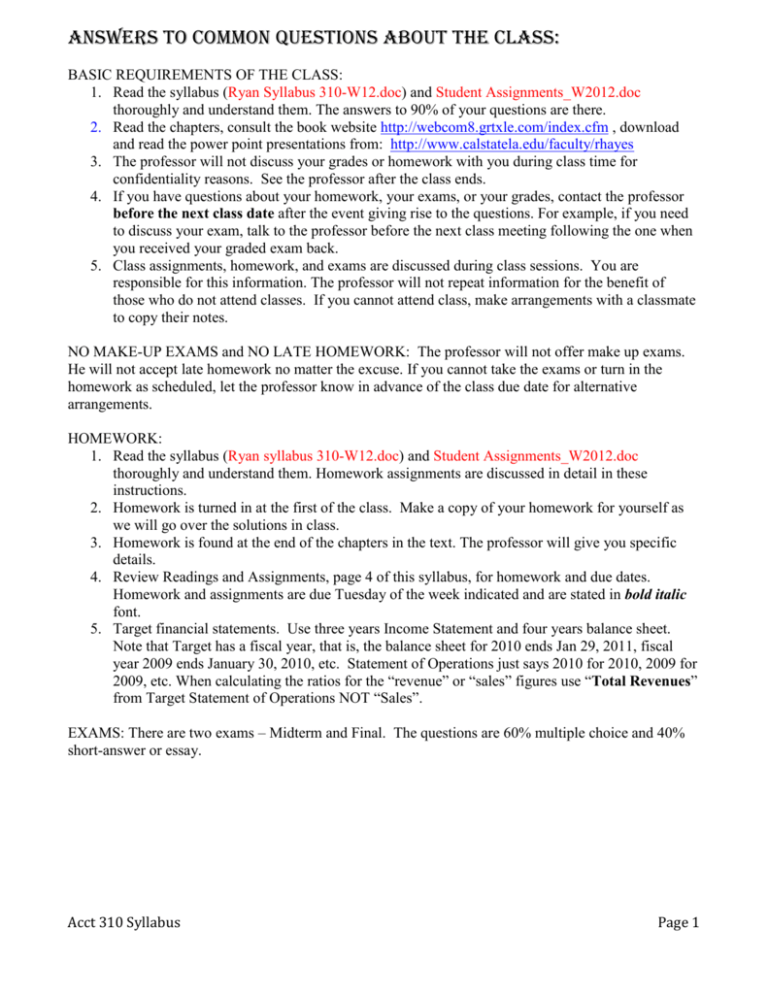
ANSWERS to common QUESTIONS about the class: BASIC REQUIREMENTS OF THE CLASS: 1. Read the syllabus (Ryan Syllabus 310-W12.doc) and Student Assignments_W2012.doc thoroughly and understand them. The answers to 90% of your questions are there. 2. Read the chapters, consult the book website http://webcom8.grtxle.com/index.cfm , download and read the power point presentations from: http://www.calstatela.edu/faculty/rhayes 3. The professor will not discuss your grades or homework with you during class time for confidentiality reasons. See the professor after the class ends. 4. If you have questions about your homework, your exams, or your grades, contact the professor before the next class date after the event giving rise to the questions. For example, if you need to discuss your exam, talk to the professor before the next class meeting following the one when you received your graded exam back. 5. Class assignments, homework, and exams are discussed during class sessions. You are responsible for this information. The professor will not repeat information for the benefit of those who do not attend classes. If you cannot attend class, make arrangements with a classmate to copy their notes. NO MAKE-UP EXAMS and NO LATE HOMEWORK: The professor will not offer make up exams. He will not accept late homework no matter the excuse. If you cannot take the exams or turn in the homework as scheduled, let the professor know in advance of the class due date for alternative arrangements. HOMEWORK: 1. Read the syllabus (Ryan syllabus 310-W12.doc) and Student Assignments_W2012.doc thoroughly and understand them. Homework assignments are discussed in detail in these instructions. 2. Homework is turned in at the first of the class. Make a copy of your homework for yourself as we will go over the solutions in class. 3. Homework is found at the end of the chapters in the text. The professor will give you specific details. 4. Review Readings and Assignments, page 4 of this syllabus, for homework and due dates. Homework and assignments are due Tuesday of the week indicated and are stated in bold italic font. 5. Target financial statements. Use three years Income Statement and four years balance sheet. Note that Target has a fiscal year, that is, the balance sheet for 2010 ends Jan 29, 2011, fiscal year 2009 ends January 30, 2010, etc. Statement of Operations just says 2010 for 2010, 2009 for 2009, etc. When calculating the ratios for the “revenue” or “sales” figures use “Total Revenues” from Target Statement of Operations NOT “Sales”. EXAMS: There are two exams – Midterm and Final. The questions are 60% multiple choice and 40% short-answer or essay. Acct 310 Syllabus Page 1 NOTES ON CLASS Questions Acct 310 Syllabus Page 2 Week 1 2 3 4 5 6 7 8 9 10 Reading and assignments Review of accounting cycle – Christy’s Lemonade Stand Journal entries, adjusting entries, posting, trial balance, income statement, statement of retained earnings, balance sheet Review of the Income Statement and Balance Sheet – format, information and importance Readings: Chapters 1 and 2 Statement of Cash Flows; DuPont Formulas – ROSE Homework 1: Review Problem due Review the accounting cycle, review the categories of ratios, comparability Profit Margin Analysis: common sizing and trend analysis – where costs are “out of line” Ways to improve revenue, revenue variations Revenue recognition rules, how to increase revenue and analysis Readings: Chapters 3 and 4 Homework 2: Horizontal and Vertical analysis of Balance Sheet and Income Statement for Target Cost structure, cost behaviors, and cost analysis Costs/expenses – direct costs and indirect costs, variable and fixed costs Standard costing method/ABC costing method Review income statement – revenues, sales, COGS, expenses, profit Gross margin, contribution margin Operating leverage – capital intensive, labor intensive Readings: Chapters 5 and 6 In Class Case: ABC Case Homework 3: Profitability, Effectiveness, Solvency, and Liquidity ratios for Target Effectiveness ratios, Internal Control Time Value of Money, Capital Budgeting Readings: Chapters 15, 7, 8, 9 Homework 4: ABC Costing Problem Types of financing available, Financial Data research Solvency ratios, Financing choices and use of financial leverage Readings: Chapters 10 and 11 Homework 5: Operating Leverage Problem (Elliot Page, Inc.) Financial leverage and solvency Cash flows and liquidity Midterm February 14 Readings: Chapters 12 Due: Internal Control Report Financial statement projection Income statement and balance sheet Comprehensive financial analysis Projecting cash flows Readings: Chapters 13 and 14 Due: Capital Budgeting Case- Rowe (Case #1) Earnings management and fraud Readings: Chapter 16 Corporate Governance and Sarbanes Oxley Act Annual Report Project Presentations Readings: Chapter 17 Due: Peer Evaluations, Annual Report Paper Forecasting Case (Case #2) Annual Report Project Presentations Acct 310 Syllabus Page 3
